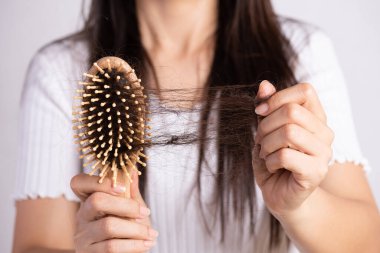Hair loss is a common concern affecting millions of men and women worldwide. Among the various treatments available, Finasteride has emerged as a popular and effective option. Originally developed to treat benign prostatic hyperplasia (BPH), Finasteride is now widely used to combat male pattern baldness.
In this article, we’ll delve into the effectiveness of Finasteride in preventing hair loss, examine its benefits, and explore its potential risks and side effects.
Understanding Finasteride
Finasteride is an oral medication that works by inhibiting the enzyme 5-alpha-reductase. This enzyme converts testosterone into dihydrotestosterone (DHT), a hormone that shrinks hair follicles and contributes to hair loss. By reducing DHT levels in the scalp, Finasteride helps to slow down hair loss and, in many cases, promotes hair regrowth.
Effectiveness of Finasteride
Numerous studies have demonstrated the efficacy of Finasteride in treating male pattern baldness. Clinical trials have shown that approximately 80-90% of men taking Finasteride experience a halt in hair loss, and about 65% see significant hair regrowth after one year of use.

Key Findings:
- Halts Hair Loss: Finasteride effectively stops the progression of hair loss in most users.
- Promotes Hair Regrowth: A significant percentage of men experience hair regrowth, particularly on the crown and mid-scalp areas.
- Long-Term Benefits: Continued use of Finasteride maintains hair density and reduces the likelihood of further hair loss.
Pros of Using Finasteride
Finasteride offers several benefits for those struggling with hair loss:
- High Success Rate: The majority of users experience positive results, with many noticing a significant reduction in hair loss and visible regrowth.
- Convenience: Finasteride is taken orally, making it easy to incorporate into daily routines.
- FDA-Approved: Finasteride is one of the few medications approved by the U.S. Food and Drug Administration (FDA) for treating male pattern baldness, ensuring it has undergone rigorous testing for safety and efficacy.
Cons and Potential Side Effects
While Finasteride is effective for many, it is not without its drawbacks. Potential side effects and considerations include:

- Sexual Side Effects: Some users report decreased libido, erectile dysfunction, and reduced semen volume. Although these side effects are relatively rare (affecting less than 2% of users), they can be concerning.
- Hormonal Changes: By altering hormone levels, Finasteride can cause breast tenderness or enlargement (gynecomastia) in rare cases.
- Psychological Impact: There are reports of mood changes, depression, and anxiety in some users.
- Potential Risk of High-Grade Prostate Cancer: Long-term use of Finasteride has been associated with a slight increase in the risk of developing high-grade prostate cancer. This is a controversial and actively researched area, and users should discuss risks with their healthcare provider.
- Not Effective for All: Finasteride is primarily effective for male pattern baldness and may not work for hair loss caused by other factors, such as alopecia areata or telogen effluvium.
Important Considerations
Before starting Finasteride, it is crucial to consult with a healthcare professional. A doctor can provide personalized advice based on individual health conditions and hair loss patterns.
Additionally, Finasteride is generally not recommended for women, particularly those who are pregnant or may become pregnant, due to the risk of birth defects.
Wrapping Up
Finasteride has proven to be a highly effective treatment for male pattern baldness, offering significant benefits in terms of halting hair loss and promoting regrowth.
However, it is essential to be aware of the potential side effects and weigh the pros and cons before starting the medication. Consulting with a healthcare provider can help ensure that Finasteride is a suitable and safe option for addressing hair loss.
With proper use and medical guidance, many individuals can achieve a fuller, healthier head of hair and regain their confidence.






